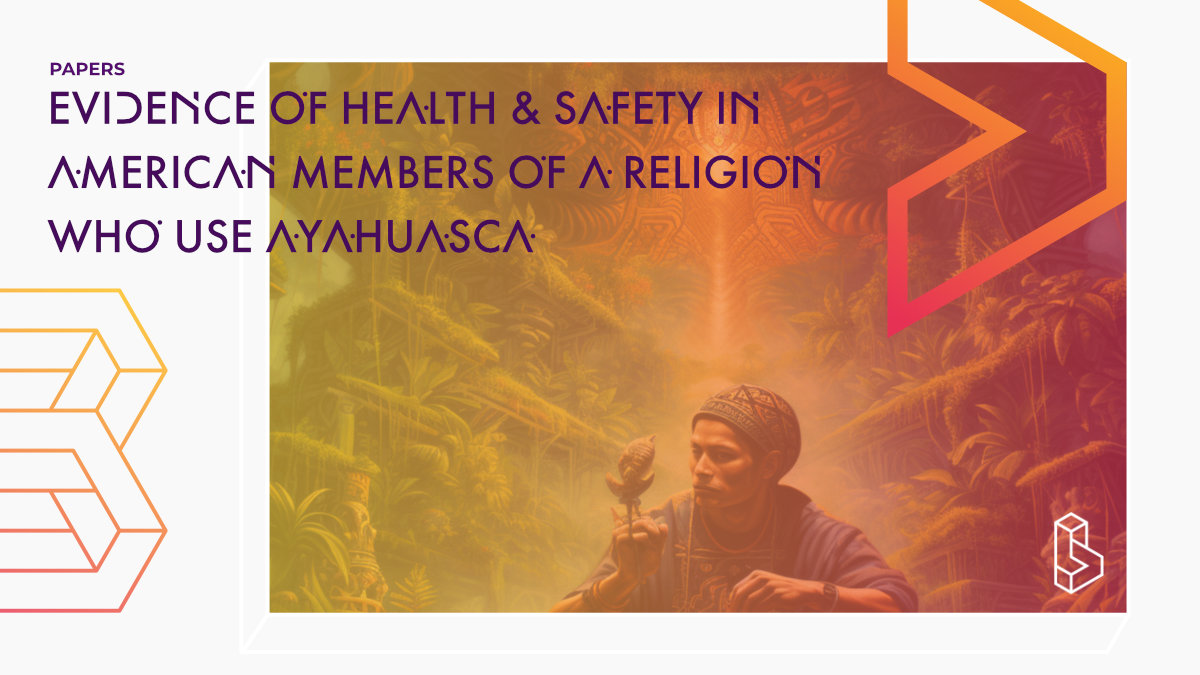This qualitative interview study (n=32) analysed the self-report of interviewees, recruited from the community of the Santo Daime Church, who use ayahuasca as a religious sacrament. Interviewees attributed psychological and physical benefits to their ayahuasca use and reported the remission of psychiatric disorders and drug abuse.
Abstract of Evidence of health & safety in American members of a religion who use ayahuasca
“Background: Ayahuasca is a South American hallucinogenic tea used as a sacrament by the Santo Daime Church, other religions, and traditional peoples. A recent U.S. Supreme Court decision indicates religious ayahuasca use is protected, but little is known about health consequences for Americans.
Material and Method: 32 (out of 40) American members of one branch of the Santo Daime Church were interviewed providing demographic information, physical exam, drug use timeline, a variety of psychological measures, and data about childhood conduct disorder. Subjects were asked about extent of Church participation, what is liked least and most about ayahuasca, and what health benefits or harms they attribute to ayahuasca.
Results: Members usually attend services weekly (lifetime 269+/-314.7 ceremonies; range 20-1300). Physical exam and test scores revealed healthy subjects. Members claimed psychological and physical benefits from ayahuasca. 19 subjects met lifetime criteria for a psychiatric disorder, with 6 in partial remission, 13 in full remission, and 8 reporting induction of remission through Church participation. 24 subjects had drug or alcohol abuse or dependence histories with 22 in full remission, and all 5 with prior alcohol dependence describing Church participation as the turning point in their recovery.
Conclusions: Conclusions should not be extrapolated to hallucinogen abusers of the general public. For those who have religious need for ingesting ayahuasca, from a psychiatric and medical perspective, these pilot results substantiate some claims of benefit, especially if subjects interviewed fully reflect general membership. Further research is warranted with blinded raters, matched comparison groups, and other measures to overcome present study limitations.“
Authors: John H. Halpern, Andrea R. Sherwood, Torsten Passie, Kimberly C. Blackwell & Arwood J. Ruttenber
Summary of Evidence of health & safety in American members of a religion who use ayahuasca
Ayahuasca, also known as hoasca, is a traditional medicine and religious sacrament of Native peoples across South America. It is prepared by boiling shredded Banisteriopsis caapi vine with Psychotria viridis leaves and other plant products with nicotinic and muscarinic constituents.
DMT is a Schedule I hallucinogen in the United States and is only sporadically encountered in the illicit market. There are only 71 DMT samples listed in the System to Retrieve Information from Drug Evidence (STRIDE) and 65 state and local cases involving 82 DMT samples in the NFLIS.
Find this paper
Evidence of health and safety in American members of a religion who use a hallucinogenic sacrament
Open Access | Google Scholar | Backup | 🕊
Cite this paper (APA)
Halpern, J. H., Sherwood, A. R., Passie, T., Blackwell, K. C., & Ruttenber, A. J. (2008). Evidence of health and safety in American members of a religion who use a hallucinogenic sacrament. Med Sci Monit, 14(8), 22.

